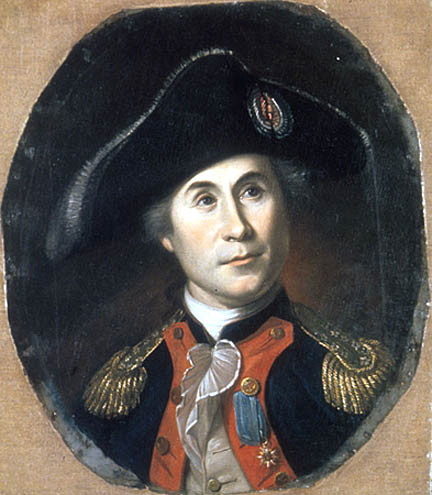
 |
|||||||||
JOHN PAUL JONES 1741-1792 Charles Willson Peale, from life, c. 1781-1784 Oil on canvas. H 22, W 19 in (H 55.9, W 48.3 cm) Independence NHP INDE 11886
|
|||||||||
| About this Portrait: Charles Willson Peale may have painted his museum portrait of Jones as early as 1781. Jones wears the French Cross of the Institution of Military Merit [the gold medal hanging from blue ribbon through top left buttonhole]. Louis XVI presented this medal to him in 1780. Early in the following year, Jones returned to Philadelphia, where Congress confirmed his acceptance of the French decoration. Peale knew of the congressional honor and he may have taken Jones's portrait during the six-month period in 1781 when the captain was in America to receive it. On the other hand, Jones returned to Philadelphia in 1783; that may have been the occasion of this portrait. The portrait is listed in Peale's October 13, 1784 Freeman's Journal and Pennsylvania Daily Advertiser announcement of the museum. Jones and his exploits provided Peale with material for an additional museum endeavor. In 1786, the artist made the Gallant Action of Paul Jones in Taking the Serapis the topic of a painting for his moving picture exhibition. Ownership History: Listed in the 1795 Peale Museum catalog. Purchased by the City of Philadelphia at the 1854 Peale Museum sale. |
|||||||||
|
|||||||||
|
|
||
|
Note: Prev/next are in alphabetic order within their respective theaters. |
||
Last Modified: